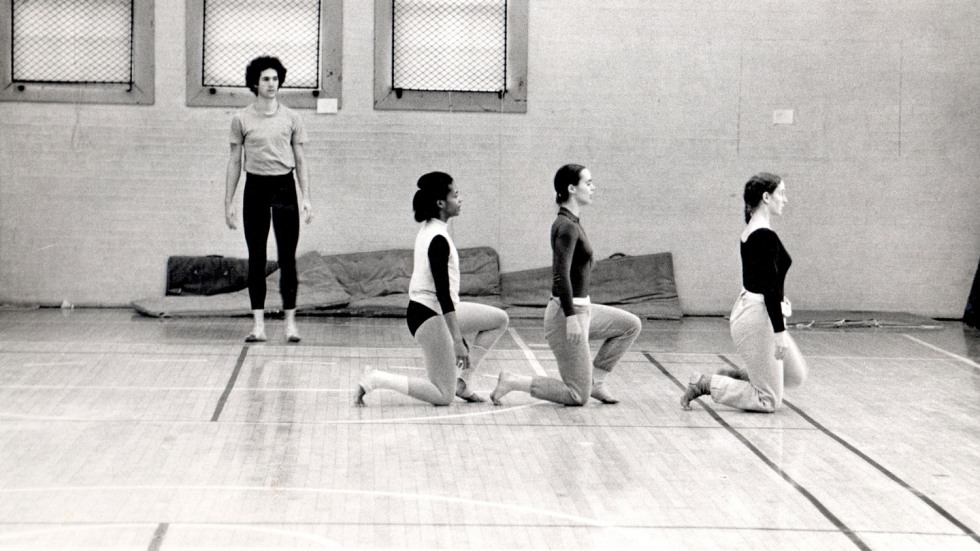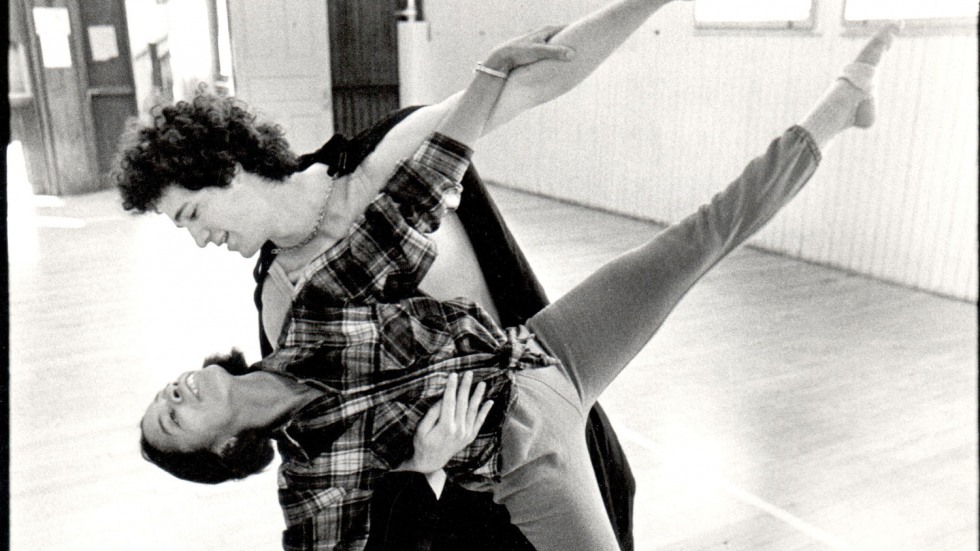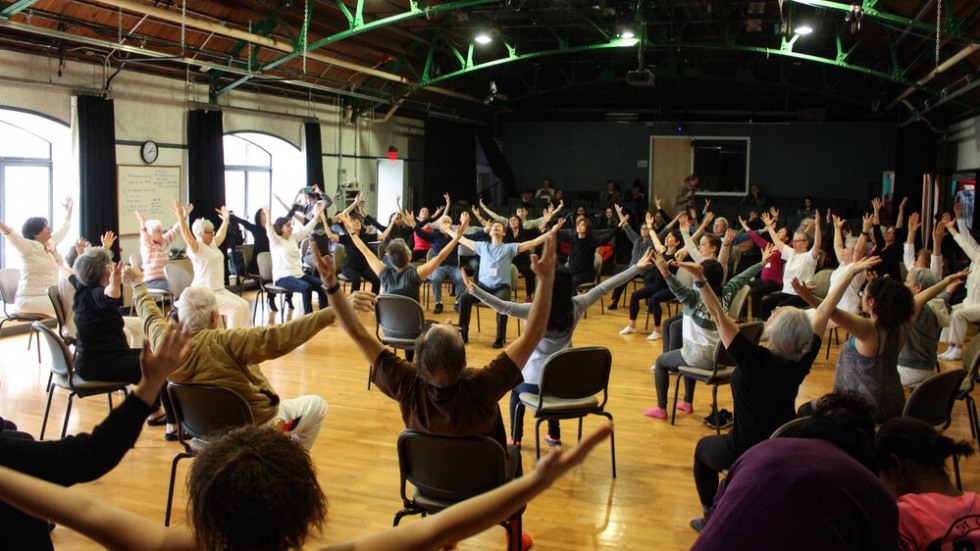PROVIDENCE, R.I. [Brown University] — Just about everyone at Brown knows about Campus Dance, an annual bash for graduating students and returning alumni held on the College Green during Commencement and Reunion Weekend. But for nearly a decade, another kind of campus dance at Brown has quietly built a fan club and found its own renown.
The Other Campus Dance, hosted by Julie Strandberg, a distinguished senior lecturer in theatre arts and performance studies, provides a space for alumni to meet, reminisce and bond, just like its namesake. But rather than grooving to booming pop and rock music, participants stretch as they listen to the soothing sounds of Johann Pachelbel’s “Canon in D.” There’s no spirited midnight singalong — just a low-impact, upbeat modern dance class.
Strandberg said her favorite element of the event is that it’s open to all, regardless of age or ability — which means that, like the larger Campus Dance on the Main Green, it attracts people from wildly different generations and walks of life.
“Dancing is all about looking at what you can do, rather than what you can’t do,” Strandberg said. “You can dance if you have a tight hamstring. You can dance if you’re recovering from an injury. You can dance if you are paralyzed from the waist down and you’re sitting in a chair. If you want to dance, all you need is a body.”
Well, that and a computer. On Saturday, March 20, at 11 a.m., the Other Campus Dance kicks off a weeklong virtual Festival of Dance, chock full of studio classes, engaging presentations and premiere performances. The festival’s aim is not only to showcase student talent and faculty research but also to celebrate a major milestone: 50 years of dance at Brown.
And for the entirety of that half-century, Strandberg has been a leader in Brown’s dance program, having arrived on College Hill in 1969, the same year the University established its signature Open Curriculum. For more than a decade, she was the only dance instructor at Brown. She taught technique and composition in a converted dormitory lounge inside Pembroke College’s Metcalf Hall. She offered stretching lessons to the men on the neighboring Brown campus in her free time.


